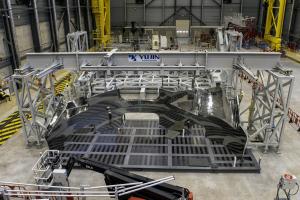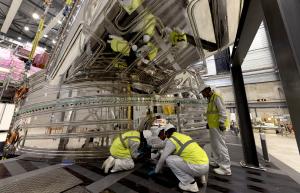All that glitters is not silver
The ITER superconducting magnets, which operate at the ultra-cold temperature of 4 K (minus 269 °C), must be protected from any type of heat transfer. Several components contribute to the magnetic system's thermal insulation: the vacuum in the cryostat ensures that no heat is transferred by convection, the structures that support the vertical coils (gravity supports) greatly reduce conduction by contact, and the thermal shield system raises an obstacle against the radiative heat transfer (electromagnetic waves) generated by sources of heat.
One of the most efficient ways of blocking thermal radiation is to coat thermal shield panels with a thin layer of pure silver, a "low-emissivity" element. However during early machine assembly, it was discovered that the processes involved in silver-coating operations and thermal shield cooling pipe welding had in some cases resulted in the presence of chlorine residues and associated corrosion, with millimetre-deep cracks.
Two sets of vacuum vessel thermal shield panels were sent to India (soon to be followed by 5 others) for repair. Repair entailed removing all cooling pipes, grinding to remove up to approximately ~2mm of base material just under the cooling pipes, and finally re-attaching new pipes.
One set has already been shipped back to ITER where its silver coating was removed and its surface polished to mirror-like perfection (less than 80 microns rugosity). In terms of thermal emissivity ultra-high polishing ensures a similar performance as silver coating.
The outboard panel pictured here in the former Cryostat Workshop will soon join the two other elements of the thermal shield set for vacuum vessel sector #7 already in place in the handling tool in the Assembly Hall.



